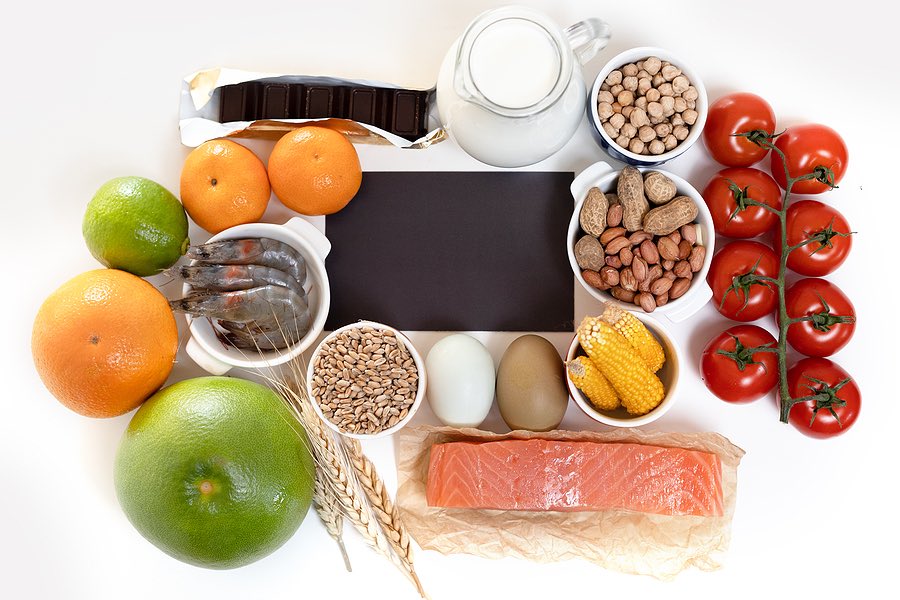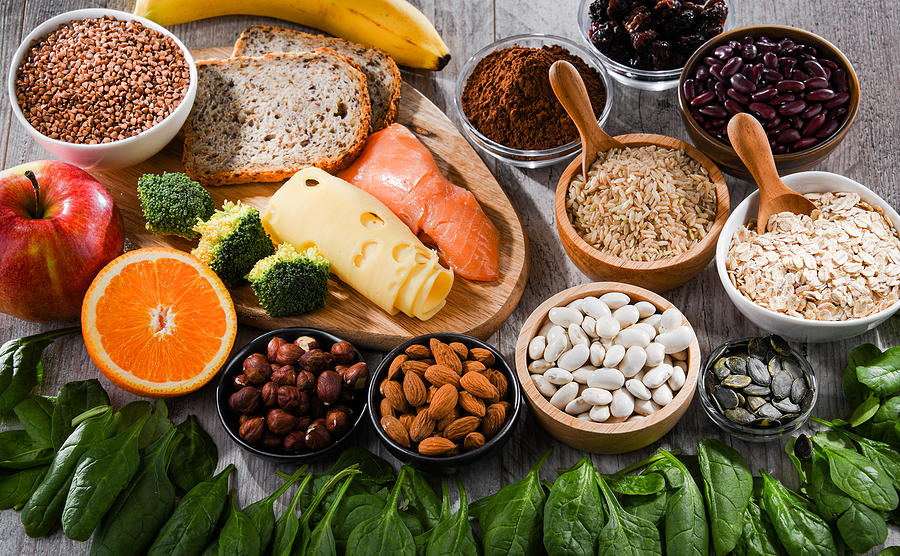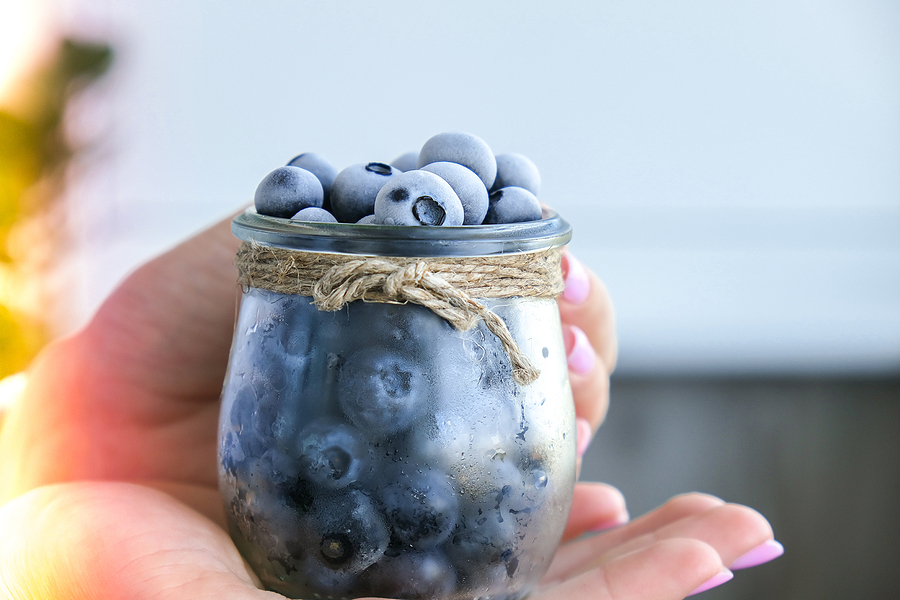A couple of years ago, I was having dinner with my friend Evie and she was telling me about some really uncomfortable symptoms she’d been experiencing. The most startling thing was that her hair was falling out in clumps! She was also exhausted and weak, was having a hard time staying warm no matter what she tried, and had been gaining weight though her diet hadn’t changed.
These symptoms are common indicators of many different health conditions, so I was asking a lot of questions to try and narrow the field. When Evie asked me to pass the salt, I noticed something: it was Himalyan sea salt rather than ordinary table salt. “A-ha!” I thought, then I asked Evie if she’d ever had her iodine levels checked. When she said no, I told her I would recommend she do so right away.
What was it about the sea salt that brought me to iodine?
Well, for many years, table salt has been iodized to help reduce incidence of iodine deficiency. But salt has been demonized in recent years, and there’s a push to move away from ordinary table salt (which often contains iodine) to sea salt (which often does not).
The good news is, salt isn’t the only way you can be sure you’re getting enough iodine in your diet! But before we talk about that, let’s explore why iodine is so important in the first place.
What is Iodine and why should I care about it?
It’s likely you’ve heard of iodine, but do you know what role it plays in health and wellness? If not, you aren’t alone!
The most important thing iodine does is help regulate the production of thyroid hormone. The thyroid gland doesn’t need a lot of iodine to function properly, but it does need a little. Without that, many physical consequences result — including the symptoms that Evie was experiencing.
Thyroid hormones are vital to proper metabolism functioning, bone and brain development during pregnancy and infancy, and a lot of other important functions in the body.
Research is ongoing into the impact of iodine on health, with some well documented consequences when iodine is low. These include stunted development in infants, impaired cognitive function during childhood, fibrocystic breast disease, and increased risk of developing thyroid cancer in certain conditions (exposure to radioactive iodine).
The impact on infants and children makes it especially important for women who are pregnant or breastfeeding to have proper levels of iodine in their bodies.
How common is iodine deficiency?
Although the National Institutes of Health (NIH) say that evidence points to the majority of people in the US having sufficient iodine levels, I have growing concerns that this may not be the case.
That’s because there are certain groups of people at higher risk of iodine deficiency, and conventional medical practitioners rarely mention it. I think it’s important that people have all the information. After all, anyone impacted by this condition probably doesn’t care that it’s rare — they just want to know what’s wrong!
People who follow a vegan diet or eat few dairy products, seafood, and eggs are at higher risk of deficiency since those are the foods most naturally rich in iodine. So are people who don’t use iodized salt, and people who live in regions where the soil has been depleted of its nutrients who eat mainly local foods. Honestly, with farming practices the way they are, our food simply doesn’t carry the nutrients it used to – iodine included!
If you’re not consuming enough iodine while at the same time eating foods that contain goitrogens, you are likely to develop a deficiency. That’s because these substances interfere with the way your body can use iodine. Some common goitrogens are cruciferous vegetables like cabbage, broccoli and cauliflower, as well as products containing soy.
It’s vitally important for pregnant women to understand the impacts of low iodine levels, and to know that they are perhaps at highest risk of deficiency. That’s because they need iodine both for themselves and their growing fetus. Healthy development of the baby depends on thyroid hormones, so it’s essential that nothing interferes with their production.
Why I’m concerned about iodine
I’ve been paying close attention to the conversation around iodine, especially as I noticed how little it was talked about among health professionals here in the US.
In the 1920s, when iodine deficiency first became a public health concern, there was a flurry of activity. Iodine was added to flour, then table salt, and then the issue was put to rest.
But there are so many reasons to keep talking about it, not the least of which is the fact that flour is no longer iodized, and the use of iodized salt is steadily declining.
My own reading has shown a definite trend backwards…right toward iodine deficiency. A 2018 study, for instance, showed that different consumption patterns of key sources of dietary iodine may put certain subgroups of people at risk of mild iodine deficiency. And a mild deficiency may be all it takes to wreak havoc on thyroid hormone production.
Discussion in that study said that while the US has been considered iodine sufficient for decades, there have been decreases in iodine noted, though levels remain adequate. To me, this suggests that while they may be adequate for now we really need to pay attention to this downward trend. I’ve certainly seen a downward shift in levels in my own patients in recent years.
How much is too much?
As important as talking about what low levels of iodine can do to your health, it’s equally important to mention that too much iodine is also a serious issue. High doses of iodine can actually cause thyroid disease, not treat it. That’s because, as Dr. Alan Christianson points out, your body needs iodine in very precise amounts.
That’s why you need to be careful if you supplement with iodine, and should only do so under the close supervision of a trusted medical professional. If your body has been chronically low in iodine, you may be even more sensitive should you then receive an excess.
I’ve heard stories of people going to the extreme, taking 12 milligrams of iodine to try and combat thyroid problems. That’s way too much! The US recommended daily allowance (RDA) for iodine for adults is 150 mcg/day and 290 mcg/day for lactating women.
Many researchers don’t think that’s quite enough, and believe an increase could be of great benefit to breast, thyroid, and nervous system health in women and infants. I think that women who have mild deficiencies can safely take 3000 micrograms of iodine per day – with the caveat that levels should be closely monitored.
The Impact of Iodine Deficiency on Hormone Health: Here’s What You Can Do
Do you recognize Evie’s symptoms as your own? Do you have thyroid disease, but haven’t been able to determine the root cause? Are you wondering how you can increase iodine intake naturally to see if it makes a difference? If so, you’re in the right place.
Below are three steps to take to ensure your iodine levels are adequate and help balance hormones.
1. Testing
If you know you have imbalanced thyroid hormones, but you don’t know why, I suggest asking your healthcare provider about testing. There’s a simple self-test you can do to get started.
Dip a clean cotton ball into a red-tinged USP tincture of iodine available at any drugstore. Make a 2-inch circle on soft skin tissue, such as your inner arm or thigh. If the stain on your skin takes more than six hours to fade, you probably have sufficient iodine. If it disappears within three hours, however, you may need to consume more iodine.
Of course, the self test is just an informal assessment. If you feel that it indicates a deficiency, ask your provider for the more accurate 24-hour iodine/iodine loading test. Though this test is somewhat controversial, when done properly the results are very informative.
2. Increase dietary intake
If you’re a seafood lover, here’s some good news: the best sources of dietary iodine come from the sea. Saltwater fish and other seafood, seaweeds and iodized sea salt can give you a big boost of this essential nutrient.
If seafood isn’t your thing, eggs, milk, cheese, and some vegetables – especially onions, radishes, and watercress – can also do the trick.
3. Supplement Carefully
Because it can be difficult to know just how much iodine you’re getting from the food you eat, I always recommend being sure that your daily multivitamin-mineral complex contains iodine.
If you’re taking a multivitamin with iodine and testing still shows levels that are too low, I recommend working carefully with your medical professional to find the right protocol for your body.
Information is the key to balancing hormones
Remember my friend Evie? After our dinner together, she mentioned the possibility of iodine deficiency to her doctor.
At first, he dismissed the idea, but because we’d talked, she knew to push a little. And much to his surprise, her test came back with quite low levels of iodine. They worked together to slowly raise her levels with intentional eating and careful supplementation. And it worked!
I hadn’t seen her in quite some time, and when we met up for dinner recently, I couldn’t believe the difference. Gone was the tired, anxious woman I’d dined with months ago. Her hair looked thick and luxurious, and she said she had more energy than she’s had in years.
Her success solidifies my belief that the more information we have, the more likely we are to find the issue. While some doctors may shrug off iodine deficiency as too rare to consider, I believe that if there’s any possibility that you may have too little (or, on the flip side, too much) iodine at play, we need to check it out.
When iodine levels are correct, thyroid hormones can be balanced, and you can feel great again – Just like Evie!







